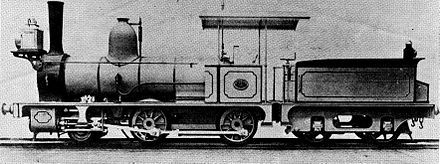Croydon Heritage Preservation Association
The newly formed Croydon Heritage Preservation Association Inc. has been established to:
- Provide a structure for Croydon’s residents to participate in the preservation of Croydon’s material and genealogical heritage.
- Identify projects that are important for maintaining the extensive gold era material heritage of Croydon (Buildings, Steam Machinery, Paper Collections), that is highly valued by the Croydon Community.
- Source grants and donations for funding the management of Croydon’s heritage and the promotion of Croydon.
- Provide an organisation that can report on the condition, maintenance and requirements of Croydon’s unique heritage assets.
The Association works closely with the Heritage, Culture and Tourism Unit of Croydon Shire Council, and has reciprocal membership with the Croydon Regional Arts Development Fund (RADF) Committee.
This Association has worked with the Community and the Council over the last three years to develop the BIG METAL Strategy. Two major projects have emerged from this strategy. The first relates to Croydon’s collection of A10 Locomotives – 202, 203 and 204.
- Croydon’s Steam Machinery Collection includes the partly restored A10 202 which was rescued by the Croydon Shire Council in 1989 from its abandonment at the former Pioneer Mill site at Station Creek and imminent destruction by metal scrappers.

Croydon’s A10’s were built in the Vulcan Foundry Company, England in 1877. When construction of the railway commenced in 1888 three locomotives were brought to the Gulf area to construct the line between Normanton and Croydon in response to the remote, but very lucrative, Croydon gold field. They were ordered from the Fairlie Engine & Steam Carriage Company by Queensland Rail and the job was sub-contracted to the Vulcan Foundry. Their construction date is 1876.
After they completed construction of the Normanton to Croydon line the A10 locomotives were strong enough to pull the requisite loads, but at the time Queensland Rail thought the maintenance was too expensive and so they were decommissioned in 1891 when the line opened for business. It seems that their tyres disintegrated quickly as the special steel sleepers and line were laid almost directly on the ground to inhibit termites and damage by flooding.
A10 203 and 204 condemned in 1894-5. A10 202 was fitted with replacement cylinders and owned by QR until 1906 when it was sold to John Forsayth who owned the Pioneer Battery on Station Creek, which operated 15 head of stampers, two Huntingdon Mills and a cyanide plant.
202 ran on a side line between the Mill and Golden Gate. It closed in 1914 and much of the machinery went to the Batavia goldfields and then to Coen. A10 202 was abandoned.
Council salvaged her in 1984, although the firebox inner and outer and all non-ferrous parts had been removed by then. In 1998/99 and then again in 2004/2005 restoration works were undertaken, but not completed. There is much recent interest in the completion of its restoration.



In 2012 Queensland Rail undertook a detailed survey and costing of 202 A10 to determine its restoration completion needs. As Croydon Council has virtually all of the parts and components to complete the restoration the quote is mostly for labour. The quote is for $540,000.
The locomotives operated on 1,067 mm (3ft 6in) gauge. The “A”, is used to identify the number of coupled wheels, being four coupled wheels for the A10 class, followed by numerals indicating the cylinder diameter of ten inches.
1. Significance Assessment
In March 2015 Dr Jan Wegner undertook the field and desktop component of the study of the A10 and photographed relevant components.
2. Cost
Queensland Rail did an assessment of the A10 202 in 2012 and provided a report that identified job components and prices for mostly labour as most of the outstanding parts have been manufactured or sourced. That quote was for $540,000.
Where to next
The best initial option for the stabilisation of the A10 202, 203 and 204 and parts is to:
- Include the “Steam Trains on Show” - Croydon’s A10 Steam Locomotives project in Croydon’s BIG METAL Strategy.
- Construct a purpose built steel-framed shed with two sections to house the Collection and the Exhibition:
- Corrugated iron in keeping with the general architecture of Croydon.
- One side shelved for storage of the parts.
- The rest closed back and side with open front for the locomotives and their parts for air flow and public access.
- The shed will be the workshop, storage and display area for these very special trains.
- Visitors and locals can access the display during True Blue Visitor Information Centre open hours. 7 days 9.00am to 4.30pm.
- The design will include a pit for working under the train and capacity to add power and sinks.
- Move the train and all of the parts and other tanks, tenders, carriages to the shed in the True Blue Visitor Centre Gardens.
